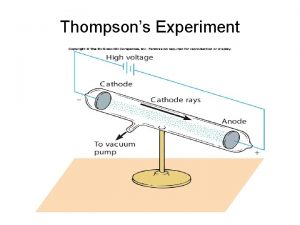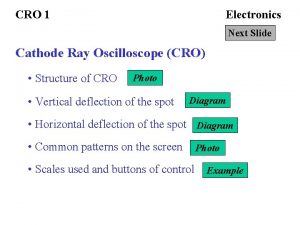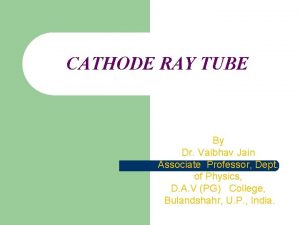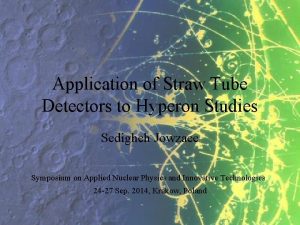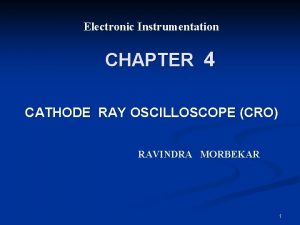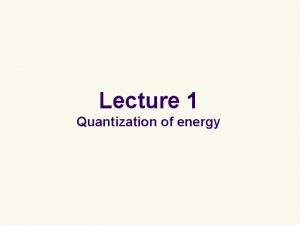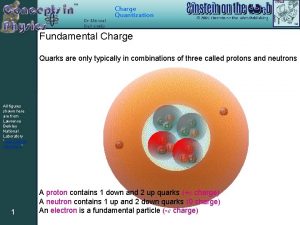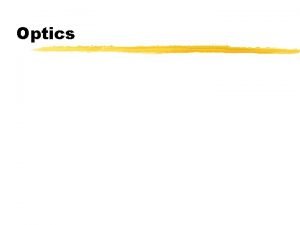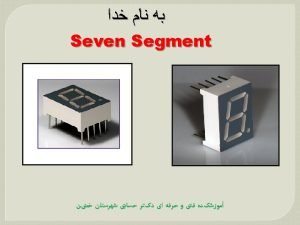Quantization Charge Light and Energy Thompsons Cathode Ray








- Slides: 8

Quantization: Charge, Light, and Energy Thompson’s Cathode Ray Tube experiment (1897): Discovered electron with his measurement of q/m for cathode rays. Millikan’s Oil drop experiment (1909): Provided conclusive evidence for the quantization of charge.

Radiation is the process in which energy is transferred by means of electromagnetic waves. Heat transfer by radiation can take place through vacuum. This is because electromagnetic waves are involved in radiation and they can propagate through empty space.

Black Body The temperature of the lampblack block rises faster than the silver block because the black surface absorbs radiant energy from the sun at a greater rate. Since absorption and emission are balanced, a material that is a good absorber, like lampblack, is also a good emitter, and a material that is a poor absorber, like polished silver, is also a poor emitter. A perfect blackbody, being a perfect absorber, is also a perfect emitter.

BB Radiation: Experiment VS. Theory Experimental data is represented by circles. Rayleigh-Jeans law (classical) theory. Planck’s law (quantum mechanics) http: //hyperphysics. phy-astr. gsu. edu/hbase/mod 6. html https: //phet. colorado. edu/sims/blackbody-spectrum_en. html

Planck Radiation Law http: //csep 10. phys. utk. edu/astr 162/lect/light/radiation. html The above function includes the parameter, h came to be known as Planck’s constant, which Planck adjusted so that his curve matched the experimental data at all wavelengths.

The Stefan–BOLTZMANN Law Of Radiation The rate at which an object emits radiant energy is proportional to the fourth power of its absolute temperature. σ is the Stefan-Boltzmann constant: σ = 5. 67 10 -8 W/m 2. K 4. e is called the emissivity: a number between 0 and 1. For perfect radiators e = 1. A is the surface area. T is the temperature of the radiator in Kelvin.

Ex. 3 -1 (Modern Phys by Tipler) A star with a surface temperature of 3000 K radiate 100 times the power radiated by Sun, whose surface temperature is 5800 K. Express the radius of the star in terms of the radius of Sun.

Peak of Black Body Radiation http: //www. globalchange. umich. edu/globalchange 1/current/lectures/universe. htm Wien’s Law:
